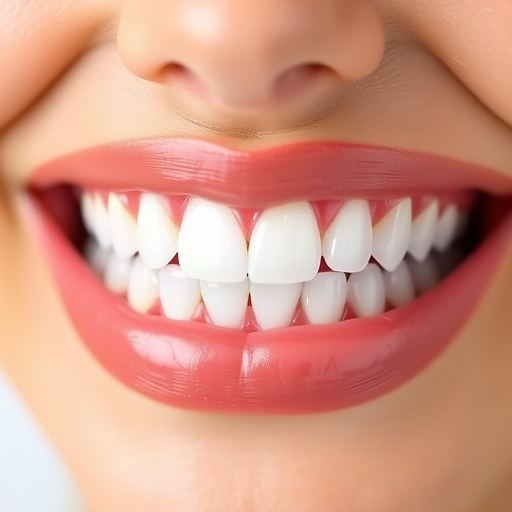Reliable Tooth Replacement Options for Everyday Function: Comprehensive Guide
Tooth loss impacts daily life, but understanding individual needs is crucial for choosing the best t…….
In the realm of oral healthcare, tooth replacement options have emerged as a transformative solution, addressing the growing need for restoring missing or damaged teeth. This comprehensive article delves into the various aspects of modern tooth replacement technologies, their global impact, economic implications, and the challenges they aim to overcome. By exploring these facets, we provide readers with an insightful understanding of how these options are revolutionizing oral care worldwide.
Definition: Tooth replacement options encompass a range of dental procedures and technologies designed to substitute missing teeth, ensuring both functional and aesthetic restoration. These options vary from traditional solutions like dentures and bridges to more contemporary approaches using dental implants and advanced biomaterials.
Core Components:
Historical Context: The quest for effective tooth replacements has spanned centuries. Ancient civilizations like the Greeks and Romans utilized materials like gold and ivory for dental prosthetics. In modern times, significant advancements were made in the 20th century with the introduction of dental implants, which revolutionized tooth replacement by mimicking natural tooth roots.
Significance: Effective tooth replacement options address multiple issues, including:
The global tooth replacement options market has witnessed substantial growth, driven by factors such as:
Regional Analysis:
| Region | Market Size (2023) | Growth Rate (2024-2030) | Key Drivers |
|---|---|---|---|
| North America | $12.5 billion | 6.2% | Advanced healthcare infrastructure, high dental awareness |
| Europe | $9.8 billion | 5.7% | Strong oral health focus, public insurance coverage |
| Asia-Pacific | $7.2 billion | 7.8% | Rapidly growing middle class, expanding dental tourism |
| Latin America | $3.1 billion | 4.9% | Increasing government initiatives, private spending |
| Middle East & Africa | $1.8 billion | 5.6% | Growing disposable income, improved access to dental care |
The tooth replacement options market exhibits a structured landscape with various players:
Market Dynamics:
Investment Patterns: The market attracts substantial investments due to:
Technological breakthroughs have significantly enhanced the field of tooth replacement options:
Regulatory frameworks play a vital role in ensuring safety and quality in tooth replacement options:
Despite its advancements, the tooth replacement options field faces several challenges:
Proposed Solutions:
A 45-year-old patient in Tokyo, Japan, presented with missing molars due to periodontal disease. Traditional dentures were considered but the patient desired a more permanent solution. Dentists employed a comprehensive approach using CAD/CAM technology to design and fabricate custom dental implants. The surgery was successful, and the patient received a set of natural-looking ceramic crowns. Follow-up visits revealed excellent osseointegration, resulting in improved chewing function and a restored sense of confidence.
A 60-year-old woman in Berlin, Germany, suffered from severe bone loss due to a previous oral infection. Standard implant options were not feasible. Through a collaborative effort between periodontists and prosthodontists, surgeons successfully placed advanced bone-grafting procedures followed by implants. The patient’s long-term success story highlights the importance of multidisciplinary care in complex tooth replacement scenarios.
Community dental clinics in urban areas of Brazil have implemented mobile tooth replacement units, providing affordable services to underprivileged populations. Using prefab implants and standardized protocols, these clinics offer efficient, low-cost solutions. This initiative has improved oral health outcomes and increased access to care for underserved communities.
The future of tooth replacement options is promising, with several potential growth avenues:
Tooth replacement options represent a dynamic field of oral healthcare, continually evolving to meet the diverse needs of patients worldwide. From historical roots to modern advancements, these solutions have come a long way, offering hope and restoration to countless individuals. As technology continues to push boundaries, the future looks bright for those seeking to reclaim their smiles and enhance their quality of life.
Q: How do I know if dental implants are right for me?
A: Consult with a qualified dentist or oral surgeon who will assess your overall health, jawbone density, and specific needs. They can provide guidance on whether implants are suitable and recommend the best course of action.
Q: Are there any risks associated with tooth replacement procedures?
A: While generally safe, all dental procedures carry some risks. Complications may include infection, nerve damage, or bone loss, but skilled professionals minimize these chances through careful planning and execution.
Q: How much do tooth replacements typically cost?
A: Costs vary widely depending on the procedure type, materials used, and geographic location. Implants and advanced restorations tend to be more expensive than traditional dentures. Financial planning and insurance coverage can help manage these costs.
Q: Can tooth replacement options improve my overall health?
A: Yes, proper oral health is linked to overall systemic well-being. Effective tooth replacements can prevent nutritional deficiencies, gum disease, and other oral conditions that may impact overall health.
Q: How do I choose the right dental professional for tooth replacement?
A: Look for experienced specialists with positive patient reviews. Ensure they have relevant certifications and stay updated with industry advancements. A consultation will help you gauge their expertise and communication style.

Tooth loss impacts daily life, but understanding individual needs is crucial for choosing the best t…….

The field of tooth replacement is evolving rapidly, driven by technology and a patient-first approac…….